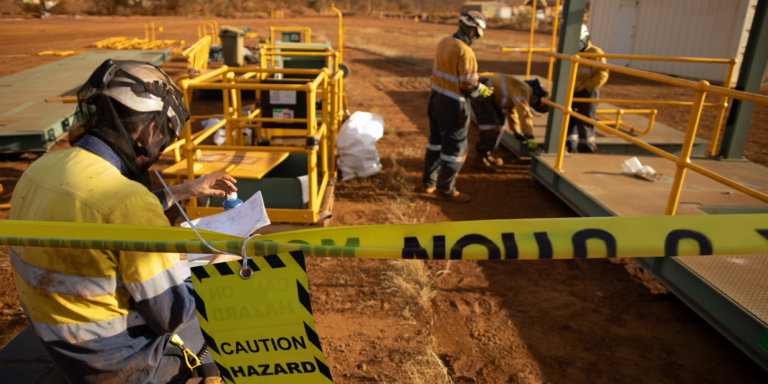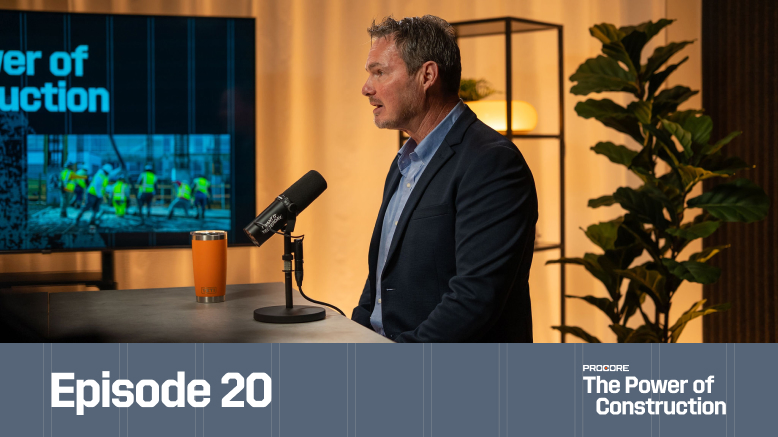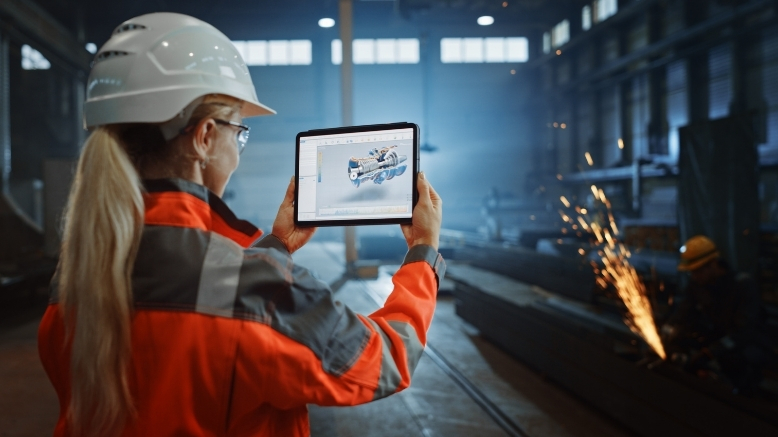— 11 min read
Common Accidents on Construction Sites

Last Updated Feb 13, 2024

Elizabeth Rivelli
Contributing Writer
12 articles
Elizabeth Rivelli is a freelance writer specializing in insurance and finance. Her writing has been featured in dozens of publications, including Investopedia, The Balance, Forbes, Bankrate, NextAdvisor, and Insurance.com. Elizabeth holds a degree in Communication Studies from Northeastern University. She lives in New England.

Clark Jensen
Strategic Product Consultant, Quality & Safety
10 articles
Clark Jensen joined Procore as a Senior Strategic Product Consultant, Quality & Safety where he spearheads product knowledge education and executes product demonstrations. He brings several years of experience in roles both on and offsite as a former senior project safety manager for a general contractor in Salt Lake City, and a senior risk control consultant for a large U.S.-based insurance firm.
Last Updated Feb 13, 2024

Construction workers can face a variety of risks on job sites, especially when safety protocols aren’t followed. Many of the risks can lead to serious injuries and even fatalities. For instance, in 2020, the number of nonfatal falls, slips, and trips was higher for construction workers than for all workers in other industries, according to the Bureau of Labor Statistics (BLS).
The specific types of job site risks that construction workers face may depend on the project. However, some dangers are more common than others. According to the Occupational Safety and Health Administration (OSHA), the leading causes of construction fatalities are falls, struck-by incidents, caught-between incidents, and electrocutions.
Understanding common construction accidents can help you and your team stay safe and avoid potential risks. Learn more about the biggest construction site risks, the causes of these risks, and how to reduce the risk of these dangers on the job.
Table of contents
Falls
In 2021, OSHA’s most frequently cited job site violation was falls. The agency issued more than 5,400 violations for falls during that year, which totaled a combined $28.8 million in penalties. The most common violation was failing to provide workers with adequate fall protection.
Because over 62% of construction workers are exposed to heights, it’s essential to have the right personal protective equipment (PPE) on the job site. Using well-fitting and tethered safety harnesses can reduce the risk of a fall injury. OSHA also recommends using a guardrail system whenever possible.
Struck-by incidents
Struck-by accidents are one of the biggest causes of construction job site fatalities: According to OSHA, a struck-by accident occurs when a construction worker comes into contact with a flying object, falling object, swinging object, or rolling object. Examples include a worker getting hit by a vehicle or a flying object, like a tool.
Struck-by accidents can result in fatalities, so it’s extremely important to reduce potential risk on the job site. Everyone on the job site should always wear proper head protection to avoid head trauma from a flying or falling object. When working at heights, it’s a good idea for workers to tether their tools to their belts to avoid falling tools.
If operating cranes or heavy machinery, workers should keep a safe distance and stay aware. Avoid standing under a crane with a suspended load and stand outside the crane’s swing radius to avoid getting hit accidentally by the load.
Electrocution
Electrocution is one of OSHA’s big four construction hazards. Some of the biggest electrical hazards on job sites are faulty wiring, contact with live overhead power lines, improper use of extension cords, and contact with damaged equipment or power tools.
Protecting workers against accidental electrocution is essential. To avoid this, job site managers should use an Assured Equipment Grounding Conductor Program (AEGCP), which is recommended by OSHA. Additionally, all cord sets, plugs, attachments, and power equipment should be inspected at the beginning of each workday. Avoid using cords that are frayed or have exposed wires.
Caught-between incidents
Caught-between incidents happen when a worker sustains a crushing injury between objects. It’s another one of OSHA’s Focus Four hazards. This can happen when workers are pulled into machinery or are compressed between shifting, rolling, or sliding objects. Caught-between accidents can also be caused by cave-ins when working in trenches.
In 2021, there were 143 reported caught in-between fatalities on construction sites, according to the BLS. Proper safety precautions can help prevent these incidents. For example, all construction workers should wear proper PPE, like high-visibility clothing, to make themselves more visible to other people on the site.
Make sure all equipment is working properly and meets OSHA standards. It’s a good idea for contractors or job site managers to inspect equipment regularly to avoid issues. To reduce the risk of cave-in incidents, OSHA recommends using a protective system anytime a worker is entering a trench that is at least five feet deep.
Check out the Top OSHA Violations in Construction for 2021.
Trips and slips
Trips and slips are the second most common construction site risk. In 2020, more than 31% of all construction laborer fatalities came from falls, slips, or trips. Depending on the job site, workers might accidentally trip over loose cords, slip on uneven surfaces or wet surfaces, or trip over obstacles, like building materials.
To reduce the risk of trips and slips, it’s important to keep the job site organized and ensure that walkways are clear and marked. If a surface is wet or uneven, use signage to alert workers. Corded tools should be put away when not in use and work areas should be kept clear of debris and waste at all times.
Fire and explosions
Fires and explosions on construction sites can be a major hazard to workers. Fires can be caused by a variety of things, like welding, poor maintenance of power tools, portable heating sources, generators, faulty wiring, and smoking. Using flammable or combustible materials can also contribute to fire and explosion risks.
To reduce fire risks, make sure to have multiple fire extinguishers easily accessible on the job site. All flammable materials should be safely stored when not in use. When doing heat work, have a manager supervise and make sure all tools cool down completely before they are put away, or before workers leave the job site for the day.
Vehicles
Vehicles pose a significant threat to construction workers involved in road projects. OSHA found that the majority of fatalities that occur in road construction work zones are caused by a worker being hit by construction equipment or a car.
When working on a road project, it’s important to follow all safety precautions. Depending on your location, your state’s Department of Transportation (DOT) may have its own rules and regulations around road work safety practices.
First, plan ahead and create a traffic management plan. Use high-visibility cones and barriers to direct vehicles around the job site. Additionally, all workers on the site should wear high-visibility clothing to improve visibility for drivers.
Create areas for each project, like a staging area for asphalt or concrete mixing, an area for tool storage, and an area for truck parking. Workers should avoid turning their backs to traffic. It’s best to face traffic when inside the job site whenever possible.
Because road construction zones can get busy, it’s also a good idea to have an individual monitor the project and the flow of traffic around the construction zone. Having a designated person keep an eye out for potential risks or hazards can help prevent accidents on road construction sites.
Demolition
Demolition is necessary on many job sites, and it can lead to construction accidents. For example, demolishing unknown construction materials, including materials with hidden lead, asbestos, or other chemicals, could cause harm to workers. Unstable materials could also collapse and injure workers.
To prevent demolition accidents, it’s essential to complete an engineering survey to better understand the type of materials used in the structure, the condition of the structure, and the risk of a collapse. It’s also important to assess health hazards, like asbestos exposure.
Overexertion
Overexertion is a common workplace injury, especially in construction. Workers are often required to bend over, lift heavy objects, perform repetitive movements, and work in awkward positions that cause overuse injuries. This can lead to a variety of issues, like back problems, muscle strains, tendinitis, and rotator cuff tears.
OSHA maintains ergonomic standards that all workplaces should follow. However, creating an ergonomics program for your own construction company can also help educate workers on proper ergonomics and how to avoid overuse injuries.
To reduce injuries, consider using materials and work methods that are less labor-intensive, and avoid extended periods of time working on the floor. You can also use flat work sites that are elevated at waist height, like a workbench or sawhorse, to reduce back strain.
You might also invest in tools that can reduce physical strain on workers. For example, if workers need to screed a concrete floor, use a motorized screed instead of doing it by hand. If workers are tying rebar by hand, use a rebar-tying tool to reduce the risk of hand or wrist injuries.
For work that requires kneeling or squatting, have workers use a kneeling creeper with chest support. This can reduce strain on the knees and lower back when performing tasks that require bending over or working in awkward positions for long periods of time.
Ground collapse
Ground collapse is a risk on many construction sites, particularly when workers are below ground. It can happen when a foundation is not strong enough to hold workers, or when wet soil erodes. Ground collapses can happen quickly, and sometimes, without any warning.
To prevent ground collapse injuries, it’s important to evaluate all surfaces before starting work. This also includes dirt and soil that workers might be digging in. If workers are doing work in a trench, they should use a protective system to avoid getting stuck or buried.
Cranes
Between 2011 and 2017, the Census of Fatal Occupational Injuries (CFOI) reported nearly 300 crane-related deaths. That’s an average of 42 crane fatalities per year over this period. Crane accidents can occur if the crane collapses, comes into contact with power lines, or a loaded crane hits someone on the ground.
Any worker that is operating a crane should be properly trained and certified by a reputable organization, like the National Commission for the Certification of Crane Operators (NCCCO). Cranes should be inspected before use to avoid mechanical issues. Additionally, a trained individual should guide the crane operator on where to place loads, which can help avoid accidents.
Other workers on the job site should also be trained in crane safety. For example, make sure all workers understand to never walk under a crane load, and stay out of the swing path of the crane.
It’s also important to practice caution when using cranes in bad weather. For example, the “Big Blue” crane collapse in 1999 occurred when the contractor instructed workers to operate the crane in high winds, even though workers expressed concern about safety. As a result, three workers were killed in the accident.
Forklifts
Forklift accidents are not uncommon. Between 2011 and 2017, there were more than 600 fatalities from forklift-related incidents. There were also about 7,000 nonfatal forklift-related injuries during this time that required workers to take time off work.
Forklift injury prevention starts with proper training. Operators should wear seat belts, use a spotter to back up and when visibility is low, avoid sharp turns, drive slowly on slippery surfaces, and never drive with the forks up. Other workers on the ground should stay clear of forklifts while they are in operation.
Chemical and toxin exposure
In 2020, almost 9% of all workplace fatalities were from construction workers who had been exposed to harmful substances or environments. It’s common for construction workers to get exposed to lead, asbestos, PVC, and heavy metals on job sites. Workers may also get sick from exposure to dust, silica, formaldehyde, and mold.
The best way to reduce the risk of chemical and toxin-related illnesses is to provide PPE to workers, like respiratory masks, gloves, and eye protection. Make sure to follow guidelines on the length of time that workers can be exposed to these chemicals before potential harm may occur. The NIOSH Pocket Guide to Chemical Hazards includes a comprehensive list of chemicals and toxins and the permissible exposure limits of each one.
Read more about Construction Health & Safety Hazards.
Simplifying safety in construction
Construction is an inherently risky job. Most workers understand the potential dangers they can face. However, it’s easy to overlook basic safety protocols. For example, workers probably know that wearing a hard hat on the job site is common sense, but enforcing those rules can be challenging, especially if they’re time-consuming or inconvenient.
One of the best ways to stay safe on job sites and reduce the risk of construction accidents is by encouraging a culture of safety, conducting proactive safety stand-downs if risks appear on the jobsite, and making safety procedures easy to follow. You should also train workers consistently, particularly when safety standards are changed or updated. It’s a good idea to appoint one individual, such as a Safety Manager or Safety Director in your company to oversee safety practices, train workers, report injuries, and enforce compliance.
Additionally, it’s a good idea to document all safety incidents that arise, even if no one gets hurt. Construction software enables construction workers to keep documents like incident reports, site plans, and daily logs in one place. This gives project stakeholders access to common sources of risk or potential hazards on the jobsite and works together to make construction sites safer.
Learn more: To Prevent Construction Deaths, Focus on Details
this is part of the series
Construction Safety Basics
Was this article helpful?
Thank you for your submission.
86%
14%
You voted that this article was . Was this a mistake? If so, change your vote
Scroll less, learn more about construction.
Subscribe to The Blueprint, Procore’s construction newsletter, to get content from industry experts delivered straight to your inbox.
By clicking this button, you agree to our Privacy Notice and Terms of Service.
Thank you!
You’re signed up to receive The Blueprint newsletter from Procore. You can unsubscribe at any time.
Categories:
Written by

Elizabeth Rivelli
Contributing Writer
12 articles
Elizabeth Rivelli is a freelance writer specializing in insurance and finance. Her writing has been featured in dozens of publications, including Investopedia, The Balance, Forbes, Bankrate, NextAdvisor, and Insurance.com. Elizabeth holds a degree in Communication Studies from Northeastern University. She lives in New England.
View profileReviewed by

Clark Jensen
Strategic Product Consultant, Quality & Safety | Procore
10 articles
Clark Jensen joined Procore as a Senior Strategic Product Consultant, Quality & Safety where he spearheads product knowledge education and executes product demonstrations. He brings several years of experience in roles both on and offsite as a former senior project safety manager for a general contractor in Salt Lake City, and a senior risk control consultant for a large U.S.-based insurance firm.
View profileExplore more helpful resources

Why Don’t We Protect the Whole Person?
Behind every safety incident is a person — and behind that person is a story we rarely ask about. Were they already exhausted before they arrived on site? Did they...

What Drives Better Safety Outcomes—Carrot, Stick, or “Zero Harm”?
On paper, construction has never looked safer. In reality, mental health claims are rising, workers are disengaged and the compliance playbook is broken. Garry Mansfield, co-founder of Scratchie, argues the...

How Close Are We to Bridging the Design-Build Divide?
For decades, construction decisions have often been made based on gut instinct. But what if the real barrier to transformation isn’t technology—it’s the divide between design and construction? In episode...

Gain Without Pain: Leveraging Technology for Strategic Safety Programs
In safety, there is always room for improvement, and technology creates the ability to scale safety programs that drive risk mitigation, operational efficiencies and competitive advantage. In fact, builders who...
Free Tools
Calculators
Use our calculators to estimate the cost of construction materials for your next project.
Templates
Find a template to help you with your construction project tasks.
Material Price Tracker
Get the latest U.S. retail prices and view historical trends for common building materials.
Glossary
Explore key terms and phrases used in the industry.
